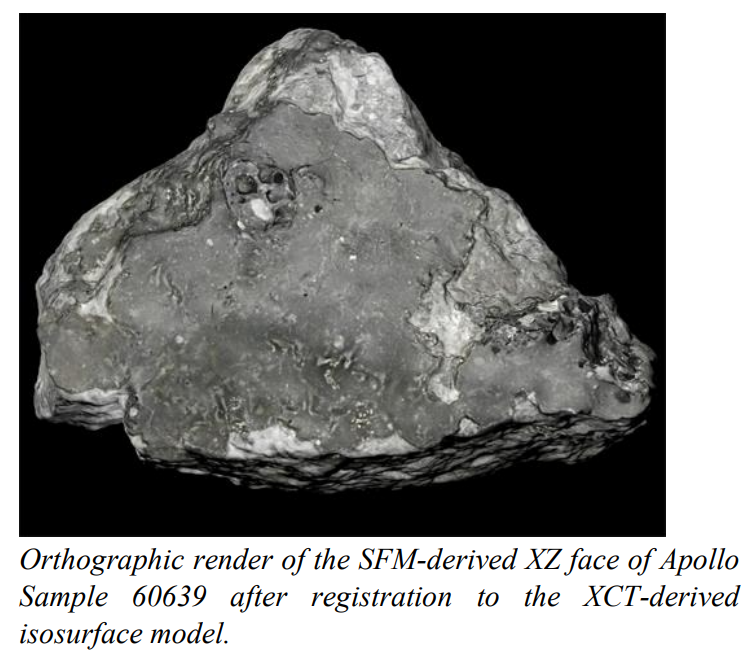Structure from Motion Photogrammetry and Micro X-Ray Computed Tomography 3-D Reconstruction Data Fusion for Non-Destructive Conservation Documentation of Lunar Samples
Our team is developing a modern, cross-disciplinary approach to documentation and preservation of astromaterials, specifically lunar and meteorite samples stored at the Johnson Space Center (JSC) Lunar Sample Laboratory Facility.

Apollo Lunar Sample 60639, collected as part of rake sample 60610 during the 3rd Extra-Vehicular Activity of the Apollo 16 mission in 1972, served as the first NASA preserved lunar sample to be examined by our team in the development of a novel approach to internal and external sample visualization. Apollo Sample 60639 is classified as a breccia with a glass-coated side and
pristine mare basalt and anorthosite clasts.
The aim was to accurately register a 3-dimensional Micro X-Ray Computed Tomography (XCT)-derived internal composition data set and a Structure-From-Motion (SFM) Photogrammetry derived high-fidelity, textured external polygonal model of Apollo Sample 60639. The developed process provided the means for accurate, comprehensive, non-destructive visualization of
NASA’s heritage lunar samples. The data products, to be ultimately served via an end-user web interface, will allow researchers and the public to interact with the unique heritage samples, providing a platform to “slice through” a photo-realistic rendering of a sample to analyze both its external visual and internal composition simultaneously.